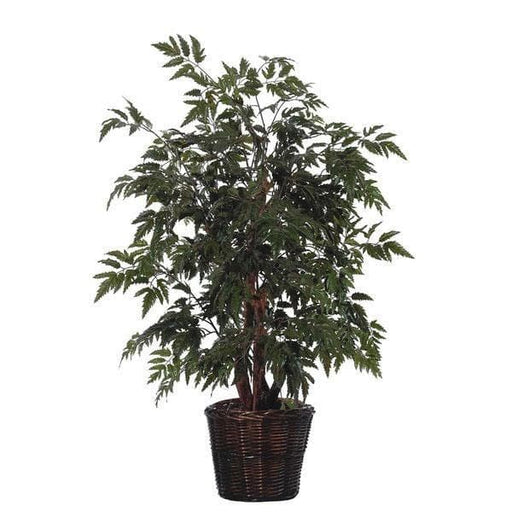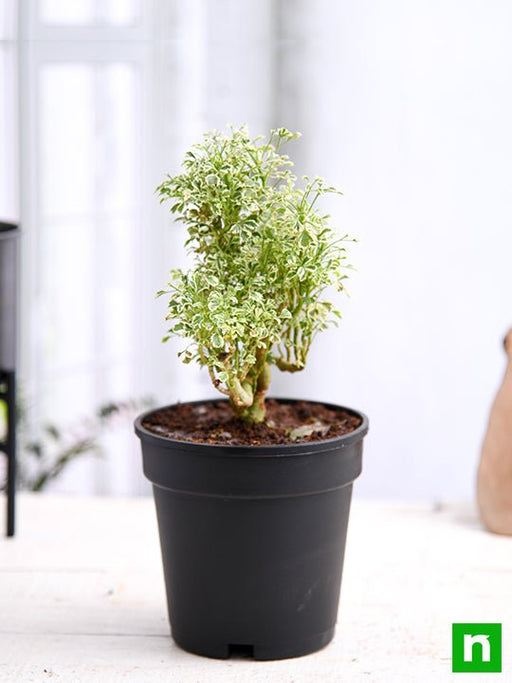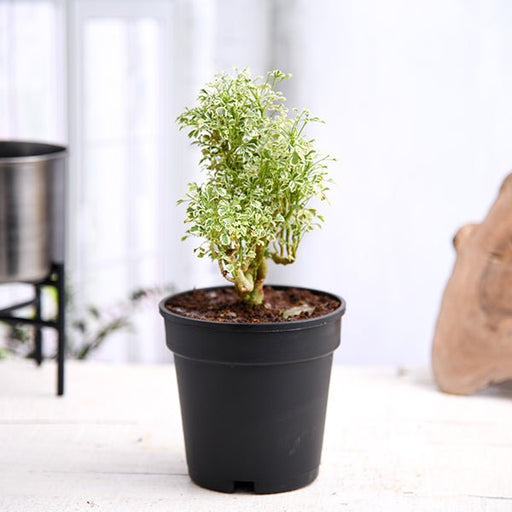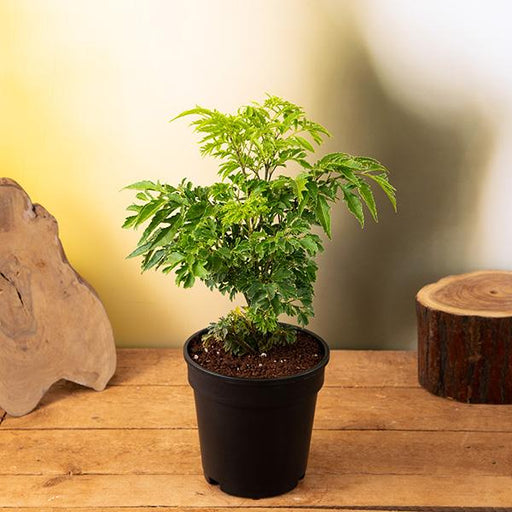Aralia Plant Care
Proper care for your Aralia plant is essential to keeping it happy and healthy. Water it regularly, ensuring the soil remains evenly moist but not soggy. Provide bright, indirect light and maintain a comfortable room temperature. Don't forget to fertilize during the growing season, and you'll have a lush, green Aralia plant to show off.
Indoor Aralia Varieties
Bring the outdoors in with various indoor Aralia plants. Some popular options include Ming Aralia, Balfour Aralia, and False Aralia. Each has unique foliage and growth patterns, making them stunning additions to your indoor plant collection.
Aralia Plant Propagation
Have you ever wanted more Aralia plants? You're in luck! Propagate Aralias by taking stem or root cuttings, and soon, you'll have new plants to share with friends or expand your own collection. It's a plant lover's dream come true.
Pruning Aralia Plants
Keep your Aralia plant looking its best with regular pruning. Remove dead or damaged branches, and shape the plant as desired. Pruning encourages bushier growth, giving your Aralia a full, attractive appearance.
Repotting Aralia Plants
Give your Aralia room to grow by repotting when it becomes root-bound. Choose a pot one size larger and use well-draining soil. Your Aralia will thank you for the extra space with healthy new growth.
Aralia Plant Pests
Keep an eye out for pests like spider mites, aphids, and mealybugs. These little critters can cause damage to your beloved Aralia. Treat infestations with insecticidal soap or neem oil, and ensure proper plant care to prevent future pest problems.
Aralia Plant Diseases
Aralia plants can sometimes fall victim to diseases such as root rot or leaf spot. Maintain a proper watering schedule and keep the foliage dry to prevent disease. If your plant does become infected, act quickly to save it.
Aralia Plant Toxicity
Although Aralia plants are visually stunning, they can be toxic to pets and humans if ingested. Keep these plants out of reach of curious pets and small children to prevent accidental ingestion.
Aralia Plant Feng Shui
Bring good energy into your home with Aralia plants. In Feng Shui, Aralias are believed to attract positive energy and wealth, making them a popular choice for home and office décor.
Aralia Plant Benefits
Improve your indoor air quality with Aralia plants. They are known to remove toxins from the air, promoting a healthier living environment. Plus, their lush green foliage can help reduce stress and promote relaxation.
Watering Aralia Plants
Striking the perfect balance when watering your Aralia plant is key. Too much or too little water can harm your plant. Keep the soil consistently moist, but avoid overwatering to prevent root rot.
Aralia Plant Fertilization
Feed your Aralia plant with a balanced, slow-release fertilizer during the growing season. Proper fertilization encourages healthy growth and vibrant foliage, giving your Aralia the nutrients it needs to thrive.
Aralia Plant Light Requirements
Provide your Aralia plant with bright, indirect light for optimal growth. Too much direct sunlight can scorch the leaves, while too little light may result in leggy growth. Find the perfect balance, and watch your Aralia flourish.
Aralia Plant Temperature
Aralia plants prefer temperatures between 60-85°F (15-29°C). Keep your plant away from drafts, heaters, and air conditioners to maintain a stable temperature and prevent stress.
Aralia Plant Soil Mix
Choosing the right soil mix for your Aralia plant is essential for its health and growth. A well-draining, loamy soil with a mix of peat moss, perlite, and compost is ideal. This combination ensures that your Aralia plant receives the nutrients it needs while preventing waterlogging and root rot. A high-quality soil mix will promote strong root development and vibrant foliage, resulting in a thriving, beautiful Aralia plant.
Aralia Plant Humidity
Aralia plants love humidity, so be sure to keep the air moist around them. Use a humidifier, mist the leaves, or place your plant on a tray filled with pebbles and water to boost humidity levels. Your Aralia will appreciate the tropical environment you create.
Aralia Plant Companion Plants
Enhance your indoor garden with companion plants for your Aralia. Pair it with other tropical plants like Calathea, Philodendron, or Monstera to create a stunning display of foliage and color that will liven up any space.
Aralia Plant Growth Rate
Aralia plants are slow to moderate growers, but with proper care, they can reach impressive heights. Be patient and nurture your plant, and you'll be rewarded with a magnificent addition to your home or office.
Aralia Plant Bonsai
Aralia plants are perfect candidates for bonsai cultivation. With their intricate branch structure and attractive foliage, you can create a stunning miniature tree that is both an art form and a conversation starter.
Aralia Plant History
Aralia plants have a rich history, originating from Asia and the Americas. They have been cultivated for their ornamental and medicinal properties for centuries. Embrace the legacy of Aralia plants by adding one to your indoor plant collection and enjoy the beauty they have to offer.















































